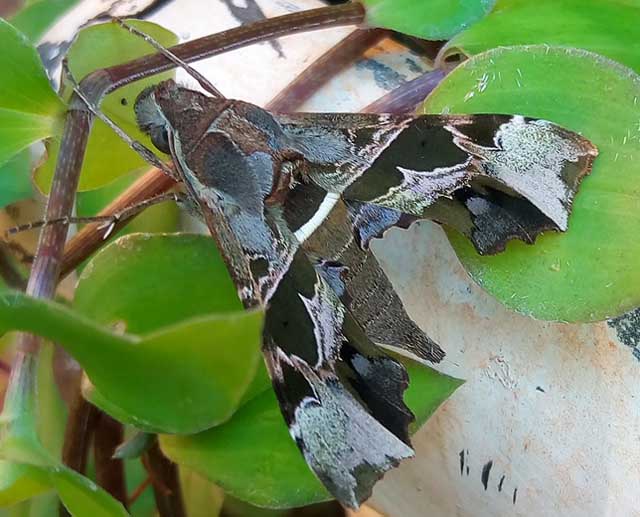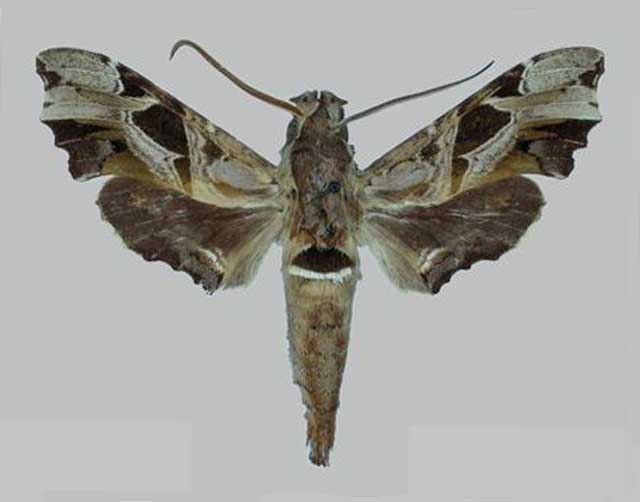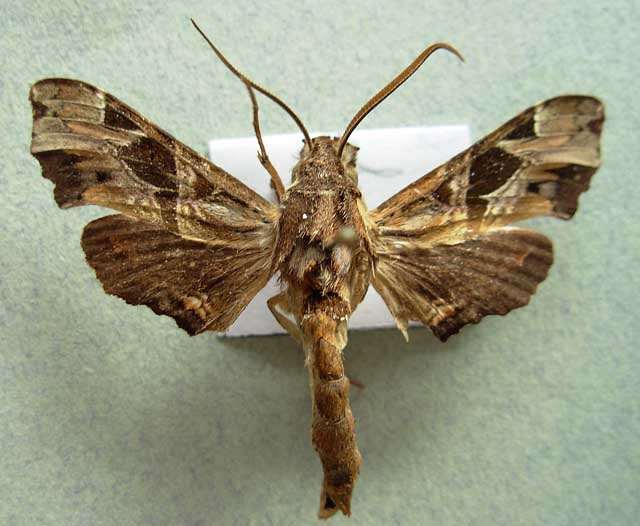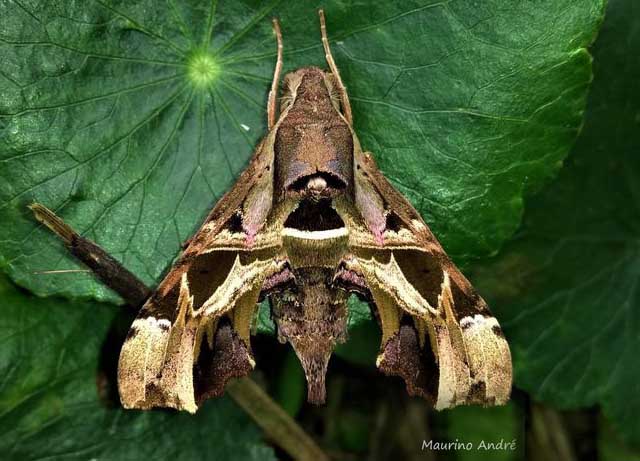|
|
Updated as per personal communication with Ezequiel Osvaldo Nunez Bustos (Yacutinga, Misiones, Argentina); 2008
Updated as per personal communication with Ezequiel Bustos (Shilap revta. lepid. 43 (172) diciembre, 2015, 615-631 eISSN 2340-4078 ISSN 0300-5267), January 4, 2016
Updated as per personal communication with Luana Martins (Itapora, Mato Grosso do Sul, Brazil, May 2019); May 25, 2019
Updated as per personal communication with Maurino Andre (Imbituba, Santa Catarin, Brazil, June 2022); June 12, 2022
|
Unzela japix discrepans
Unzela japix discrepans
Walker, 1856

Unzela japix discrepans, Itapora, Mato Grosso do Sul, Brazil,
May 2019, courtesy of Luana Martins.
This site has been created by Bill Oehlke .
Comments, suggestions and/or additional information are welcomed by Bill.
TAXONOMY:
Family: Sphingidae, Latreille, 1802
Subfamily: Macroglossinae, Harris, 1839
Tribe: Dilophonotini, Burmeister, 1878
Genus: Unzela Walker, 1856 ...........
Species: japix discrepans Walker, 1856
|
DISTRIBUTION:
Unzela japix discrepans
flies in
southeastern Brazil, the specimen type locality; Rio de Janeiro; Espirito Santo; Mato Grosso do Sul, Santa Catarina: Imbituba (MA)
and in
Argentina: Misiones (ENB).
FLIGHT TIMES:
Unzela japix discrepans probably has two to three broods annually, with adults taken
in May to June, August to September and from December to January. Luana Martins reports a May flight in Itapora, Mato Grosso do Sul, Brazil.
Maurino Abndre reports a June flight in Imbituba, Santa Catarina, Brazil.

Unzela japix discrepans, Espirito Santo, Brazil,
Creative Commons, BMNH, courtesy of Ian Kitching.
ECLOSION:
Adults eclose from pupae formed in subterranean chambers.

Unzela japix discrepans, Yacutinga, Misiones, Argentina, courtesy of
Ezequiel Osvaldo Nunez Bustos.
SCENTING AND MATING:
Females call in the males with a pheromone released from a gland at the tip of the
abdomen. Both males and females nectar at flowers.

Unzela japix discrepans, Imbituba, Santa Catarina, Brazil,
June 2022, courtesy of Maurino Andre.
EGGS, LARVAE, PUPAE:
Enjoy some of nature's wonderments, giant silk moth cocoons.
These cocoons are for sale winter and fall. Beautiful Saturniidae moths will emerge the following spring and summer.
Read Actias luna rearing article. Additional online help available.
Use your browser "Back" button to return to the previous page.
This page is brought to you by Bill Oehlke and the
WLSS. Pages are on space rented from Bizland. If you would like
to become a "Patron of the Sphingidae Site", contact Bill.
Please send sightings/images to Bill. I will do my best to respond to
requests for identification help.
 | 
Show appreciation for this site by clicking on flashing butterfly to the left.
The link will take you to a page with links to many insect sites. |





